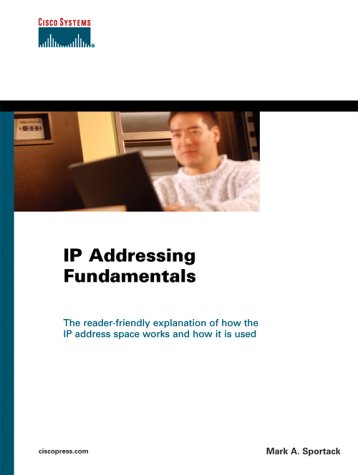

Most ebook files are in PDF format, so you can easily read them using various software such as Foxit Reader or directly on the Google Chrome browser.
Some ebook files are released by publishers in other formats such as .awz, .mobi, .epub, .fb2, etc. You may need to install specific software to read these formats on mobile/PC, such as Calibre.
Please read the tutorial at this link: https://ebookbell.com/faq
We offer FREE conversion to the popular formats you request; however, this may take some time. Therefore, right after payment, please email us, and we will try to provide the service as quickly as possible.
For some exceptional file formats or broken links (if any), please refrain from opening any disputes. Instead, email us first, and we will try to assist within a maximum of 6 hours.
EbookBell Team

0.0
0 reviewsThe reader-friendly explanation of how the IP address space works and how it is used
The Internet Protocol (IP) is the native protocol suite of the Internet and has become predominant in virtually all networks and internetworks. Managing an IP address space requires a solid command of binary mathematics, particularly as it is applied within the IP addressing architecture. The mathematics of the IP address space, however, are not intuitive and can be very difficult to grasp. Consequently, learning about IP addressing can be a lot like trying to piece together a jigsaw puzzle-but without knowing what the puzzle is supposed to look like.
IP Addressing Fundamentals explains simply and clearly how the IP address space works and how it is used. This is a reader-friendly book that details the fundamentals of the IP address space from the ground up. IP Addressing Fundamentals unravels the mysteries of subnetting, supernetting, and CIDR; thoroughly explains the binary mathematics of IPv4's addressing space; and demonstrates how an IP address becomes an active component in both networks and internetworks. Author Mark Sportack prepares you for real-world success by walking you through some of the issues and traps that lie in wait for anyone who needs to plan or manage the use of an IP address space. Most importantly, this book doesn't presume you already know what the entire IP addressing puzzle looks like.
IP Addressing Fundamentals imparts a profound command of IP addressing through a clear and concise writing style. Basics are reinforced with detailed information and numerous examples of how the concepts work. This book builds upon concepts presented in earlier chapters and concludes with fairly advanced topics that will become increasingly useful to midlevel network engineers.
After reading IP Addressing Fundamentals, you'll finally understand IP addressing and appreciate both its mechanics and relevance, and you'll know how to efficiently apply your new knowledge.